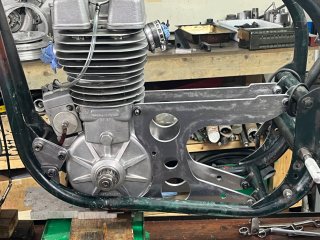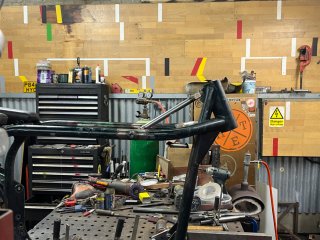Charkmandler
VIP MEMBER
- Joined
- Nov 6, 2023
- Messages
- 48
I’ve done this with all ancillary components in place and also foumd several photos of Jawa engines only using the crankcase top lug with an extra mounting point near the bottom bend of the frame so that’s the way I’ll go. Engine position where it should be.If it were me, I'd get in place all the other components that might create an interference, i.e., oil tank, intake/carb/bellmouth, primary gear or pulley, etc. From there, see what fits where. Often times these decisions make themselves.
I'd also be inclined to spread the lower rails to make room, as Knut mentioned, by cutting the front cross brace, spreading that front lower corner, and replacing or patching the cross brace. Less fiddly than denting.
I found the photos on Facebook Featherbed Specials and have put the question re where to mount the head brace with the answer from two people that they don’t use one - one is a road bike and one race. This seems crazy as the steering head needs support. I’m hoping someone racing will get back to me with information. Apparently there a number of these bikes raced in Australia but it’s difficult finding someone to talk to.
I’m thinking maybe a removable cross brace across the top frame rails above the cam box?




